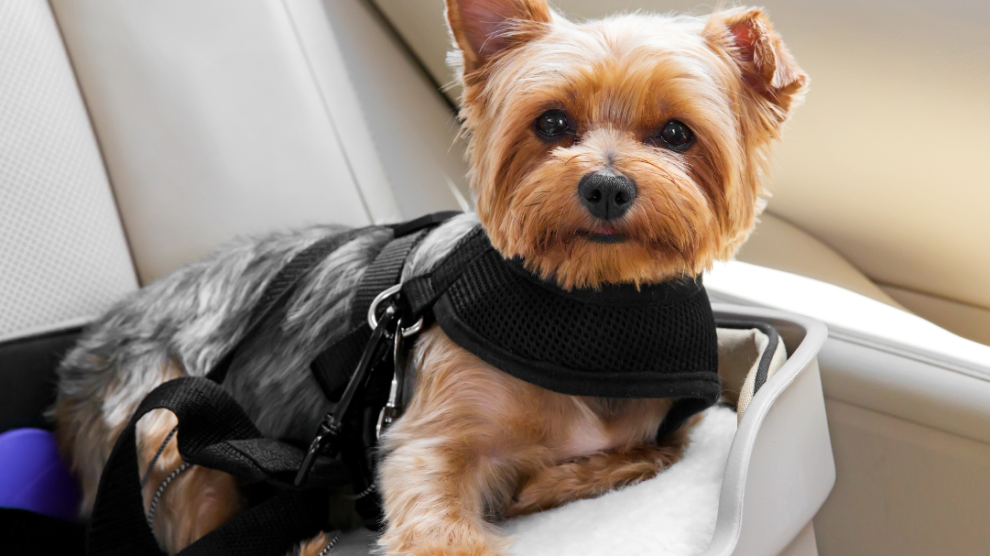The Safety of Dog Car Seats
Traveling with your furry friend can be a joy, but ensuring your dog’s safety in the car should be a top priority. A dog car seat not only protects your pet but can also enhance their travel experience and reduce distractions for the driver. If you’re considering buying a dog car seat, here’s what you need to know to make the best choice and use it safely.
Why Use a Dog Car Seat?
A dog car seat serves several important purposes:
- Safety: In the event of sudden braking or an accident, an unrestrained dog can be seriously injured. A car seat secures your pet and keeps them safe.
- Reduced Driver Distractions: Dogs that move around freely in the car can distract the driver, increasing the risk of accidents. A car seat keeps your dog securely in place.
- Comfort: Many dog car seats are designed to be cozy and comfortable, helping reduce anxiety and keeping your dog calm during travel.
Key Factors to Consider When Buying a Dog Car Seat
When choosing a dog car seat, consider the following factors to ensure it meets your needs and those of your pet.
1. Size and Fit
- Measure your dog’s size and weight to find a car seat that fits them comfortably. Different seats are available for small, medium, and large breeds.
- Ensure that the seat you choose is spacious enough for your dog to sit, lie down, and move around slightly without discomfort.
2. Attachment Mechanism
- Look for car seats that securely attach to your car’s seat. Most dog car seats have adjustable straps that can be buckled to the seatbelt or headrest.
- Some seats come with additional straps or tethers to attach to your dog’s harness, providing extra security.
3. Material and Durability
- Choose a car seat made from high-quality, durable materials that can withstand regular use.
- Many dog car seats have removable covers that are machine-washable, making them easy to clean if your dog sheds or has an accident.
4. Comfort Features
- Look for features like padding, cushioned sides, and soft linings that make the seat more comfortable for your dog.
- If you travel long distances, a comfortable seat can make a big difference in keeping your dog calm and happy.
5. Portability
- If you frequently switch between vehicles or plan to take the car seat on trips, consider a lightweight, foldable model that is easy to transport.
6. Safety Certifications
- Some dog car seats are crash-tested for safety standards similar to child car seats. Look for certifications or testing data, as these seats offer additional peace of mind.
7. Ventilation
- Ensure that the seat design does not restrict airflow or cause overheating, especially if you live in a warm climate. Look for models with breathable materials and open sides.
Types of Dog Car Seats
There are several types of dog car seats available. Here’s a brief overview:
1. Bucket Booster Seats
- These seats are elevated, allowing your dog to look out the window, which can reduce anxiety and motion sickness. They are ideal for small to medium dogs.
2. Harness Seats
- Harness seats secure the dog in place using a safety harness rather than a traditional seat. They are versatile and suitable for larger dogs, as they provide freedom of movement while keeping the dog safe.
3. Crate Car Seats
- Crate car seats provide an enclosed, secure space for your dog, ideal for longer trips or anxious pets. These seats offer maximum protection and are especially beneficial for dogs that feel safer in confined spaces.
4. Car Hammocks
- While not exactly car seats, hammocks create a protected space on the back seat, ideal for larger dogs. They prevent dogs from slipping into the footwell and protect your car seats from dirt.
How to Use a Dog Car Seat Safely
Once you’ve chosen a dog car seat, proper usage is key to keeping your dog safe and comfortable.
1. Install Correctly
- Follow the manufacturer’s instructions carefully to install the seat securely. Make sure it’s tightly fastened and doesn’t move when the car is in motion.
- Test the seat before setting off on a trip to make sure your dog is securely attached and comfortable.
2. Use a Harness
- Many dog car seats come with tethers that should be attached to a harness, not a collar. A collar attachment can pose a strangulation risk in the event of sudden braking or impact.
3. Check Regularly
- Before every trip, check that all straps and buckles are secure. Also, monitor your dog’s comfort level during the journey, especially if it’s their first time using the seat.
4. Limit Travel Time at First
- If your dog is new to car seats, start with short trips to help them get used to it. This gradual exposure can help reduce any anxiety and make longer trips more manageable.
Tips for a Comfortable Ride
Here are a few additional tips to make the travel experience more enjoyable for your dog:
- Bring familiar items like a favorite blanket or toy. This can provide a sense of security and comfort.
- Take breaks on longer trips, allowing your dog to stretch, relieve themselves, and get some fresh air.
- Monitor temperature in the car. Ensure the seat is not in direct sunlight for extended periods, as dogs can easily overheat.
Woof. Woof.
Buying and using a dog car seat is an investment in your pet’s safety and well-being. By considering factors like size, comfort, attachment mechanisms, and safety features, you can find a car seat that meets your needs. Using it properly, with a harness and regular checks, will help keep your dog safe and comfortable on every journey. A dog car seat ensures that your travels together are enjoyable, secure, and stress-free for you and your furry friend.
Make car travel an adventure that’s safe and fun for your dog by choosing the right car seat and following these guidelines!




























